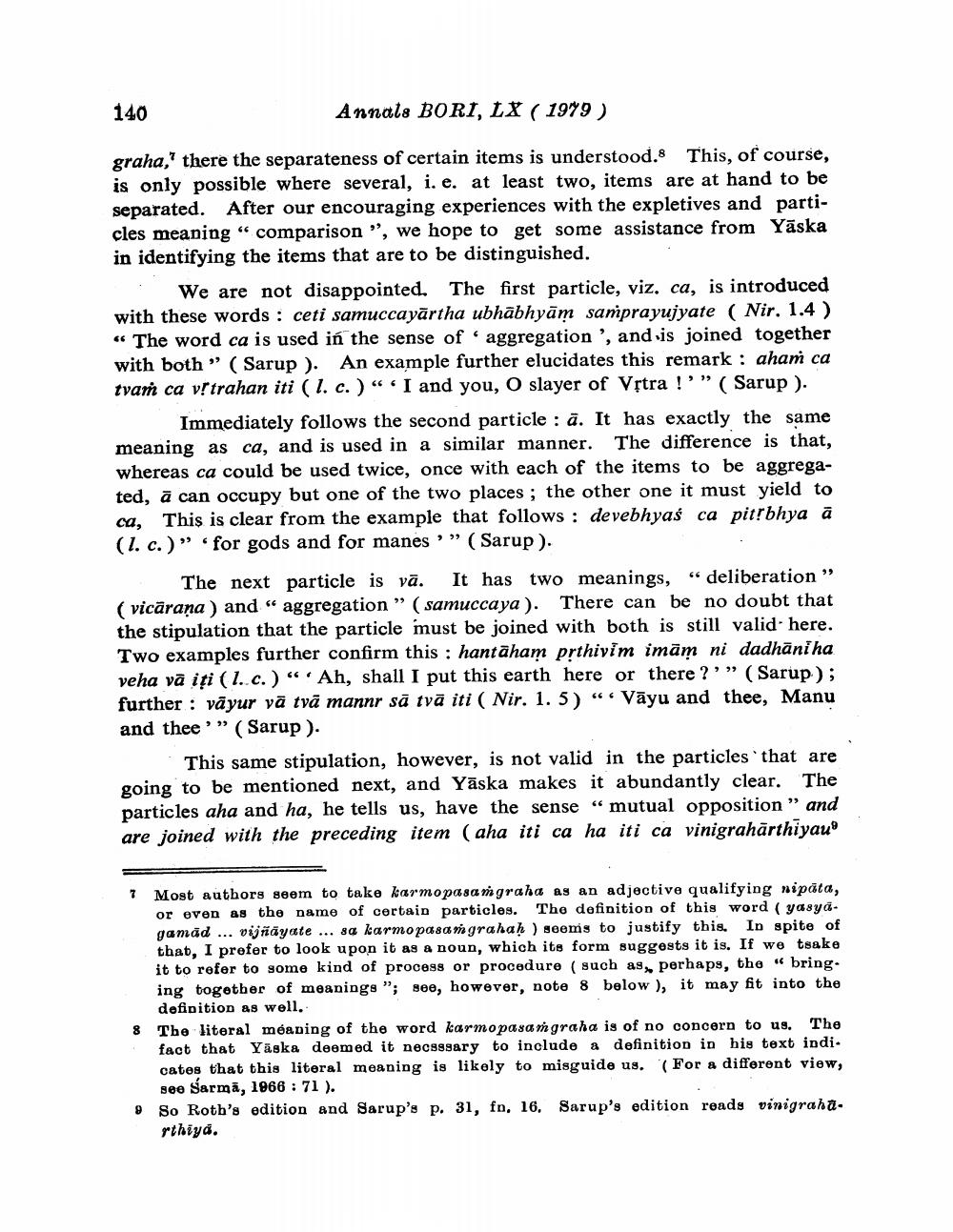Book Title: Yaskas Classification Of Nipatas Author(s): Johannes Bronkhorst Publisher: Johannes Bronkhorst View full book textPage 4
________________ 140 Annats BORI, LX (1979) graha,' there the separateness of certain items is understood. This, of course, is only possible where several, i. e. at least two, items are at hand to be separated. After our encouraging experiences with the expletives and particles meaning “ comparison”, we hope to get some assistance from Yāska in identifying the items that are to be distinguished. We are not disappointed. The first particle, viz, ca, is introduced with these words : ceti samuccayārtha ubhābhyām samprayujyate (Nir. 1.4) “ The word ca is used in the sense of aggregation', and is joined together with both” (Sarup ). An example further elucidates this remark : aham ca tvaṁ ca v!trahan iti (1. c. )“ 'I and you, O slayer of Vţtra !'" ( Sarup ). Immediately follows the second particle : ā. It has exactly the same meaning as ca, and is used in a similar manner. The difference is that, whereas ca could be used twice, once with each of the items to be aggregated, ā can occupy but one of the two places; the other one it must yield to ca, This is clear from the example that follows : devebhyaś ca pitrbhya ā (1. c.)” for gods and for manes'" (Sarup). The next particle is vā. It has two meanings, “ deliberation” (vicārana) and “ aggregation” (samuccaya). There can be no doubt that the stipulation that the particle must be joined with both is still valid. here. Two examples further confirm this : hantāham prthiyim imām ni dadhāniha veha vā iți (l..c.) “ Ah, shall I put this earth here or there?'” (Sarup); further : vāyur yā tvā mannr sā tvā iti (Nir. 1. 5)“Vāyu and thee, Manu and thee'” (Sarup). This same stipulation, however, is not valid in the particles that are going to be mentioned next, and Yāska makes it abundantly clear. The particles aha and ha, he tells us, have the sense “ mutual opposition " and are joined with the preceding item (aha iti ca ha iti ca vinigrahārthiyau Most authors seem to take karmopasangraha as an adjective qualifying nipāta, or even as the name of certain particles. The definition of this word ( yasya. gamad ... vijñāyate ... sa karmo pasaṁ grahah ) seems to justify this. In spite of that, I prefer to look upon it as a noun, which its form suggests it is. If we tsake it to refer to some kind of process or procedure (such as, perhaps, the bring. ing together of meanings "; see, however, note 8 below), it may fit into the definition as well.. 8 The literal meaning of the word karmopasangraha is of no concern to us. The fact that Yäska deemed it necessary to include a definition in his text indi. cates that this literal meaning is likely to misguide us. (For a different view, see Sarmā, 1966 : 71 ). 9 So Roth's edition and Sarup's p. 31, fn, 16. Sarup's edition reads vinigraha. rthiya.Page Navigation
1 2 3 4 5 6 7 8 9 10 11 12 13
